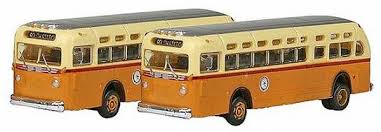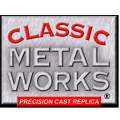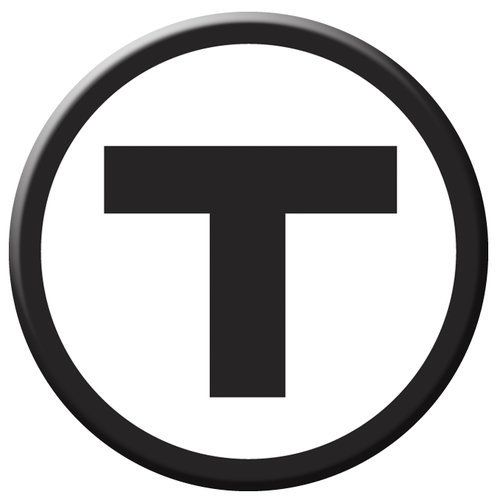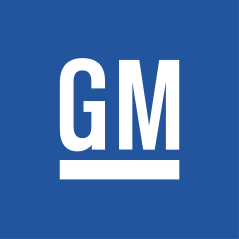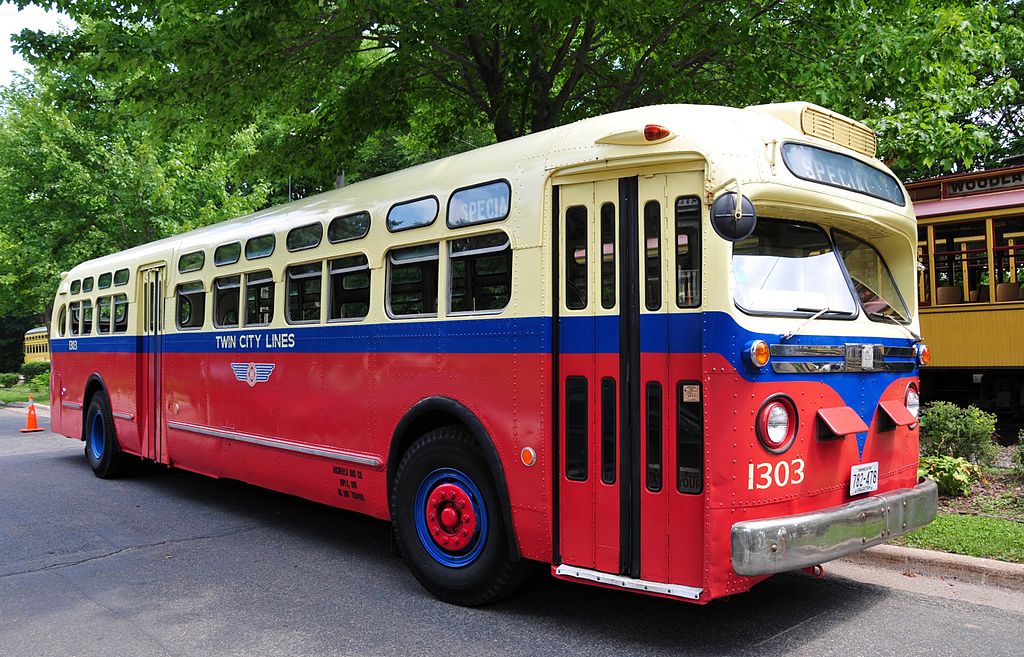Model Information: Decorated in standard General Motors Truck & Coach Division paint schemes, the Classic Metal Works models have photo-etched stainless steel mirrors, windshield wipers, and include decals for Downtown, East Side, Express, Local, North End, R.R. Station, South End, Union Station, and West Side destinations.
Prototype History: The GM "old-look" transit bus is a transit bus that was introduced in 1940 by Yellow Coach beginning with the production of the model TG-3201 bus. Yellow Coach was an early bus builder that was partially owned by General Motors (GM) before being purchased outright in 1943 and folded into the GM Truck Division to form the GM Truck & Coach Division. The Yellow Coach badge gave way to the GM nameplate in 1944. Production of most "old-look" models was stopped upon the release of the GM New-Look bus in 1959, however some smaller "old-look" models continued to be built until 1969. Approximately 38,000 "old-look" buses were built during the 29-year production run. The "old-look" name is an unofficial term that was applied to this series of GM buses after the release of the GM New-Look, with "New-Look" being an official term used by GM to describe their new line of buses that superseded the "old-look". This is an example of a retronym.
In 1959, GM introduced its New-Look bus with the "fishbowl" style front window, and production stopped on all "old-look" buses other than the "second-generation" models: the 28-foot (8.5 m) TGH-3102 which was built until 1963 and the 30-foot (9.1 m) 35xx models which were built until 1969.
From Wikipedia
In 1959, GM introduced its New-Look bus with the "fishbowl" style front window, and production stopped on all "old-look" buses other than the "second-generation" models: the 28-foot (8.5 m) TGH-3102 which was built until 1963 and the 30-foot (9.1 m) 35xx models which were built until 1969.
From Wikipedia
Road Name History: The Massachusetts Bay Transportation Authority (abbreviated MBTA and known colloquially as "the T") is the public agency responsible for operating most public transportation services in Greater Boston, Massachusetts. Earlier modes of public transportation in Boston were independently owned and operated; many were first folded into a single agency with the formation of the Metropolitan Transit Authority (MTA) in 1947. The MTA was replaced in 1964 with the present-day MBTA, which was established as an individual department within the Commonwealth of Massachusetts before becoming a division of the Massachusetts Department of Transportation (MassDOT) in 2009.
The MBTA and Philadelphia's Southeastern Pennsylvania Transportation Authority (SEPTA) are the only U.S. transit agencies that operate all five major types of terrestrial mass transit vehicles: light rail vehicles (the Ashmont–Mattapan High Speed and Green Lines); heavy rail trains (the Blue, Orange, and Red Lines); regional rail trains (the Commuter Rail); electric trolleybuses (the Silver Line); and motor buses (MBTA Bus).[ In 2016, the system averaged 1,277,200 passengers per weekday, of which the subway averaged 552,500 and the light-rail lines 226,500, making it the fourth-busiest subway system and the busiest light rail system in the United States.
The MBTA is the largest consumer of electricity in Massachusetts, and the second-largest land owner (after the Department of Conservation and Recreation). In 2007, its CNG bus fleet was the largest consumer of alternative fuels in the state. The MBTA operates an independent law enforcement agency, the Massachusetts Bay Transportation Authority Police.
From Wikipedia
The MBTA and Philadelphia's Southeastern Pennsylvania Transportation Authority (SEPTA) are the only U.S. transit agencies that operate all five major types of terrestrial mass transit vehicles: light rail vehicles (the Ashmont–Mattapan High Speed and Green Lines); heavy rail trains (the Blue, Orange, and Red Lines); regional rail trains (the Commuter Rail); electric trolleybuses (the Silver Line); and motor buses (MBTA Bus).[ In 2016, the system averaged 1,277,200 passengers per weekday, of which the subway averaged 552,500 and the light-rail lines 226,500, making it the fourth-busiest subway system and the busiest light rail system in the United States.
The MBTA is the largest consumer of electricity in Massachusetts, and the second-largest land owner (after the Department of Conservation and Recreation). In 2007, its CNG bus fleet was the largest consumer of alternative fuels in the state. The MBTA operates an independent law enforcement agency, the Massachusetts Bay Transportation Authority Police.
From Wikipedia
Brand/Importer Information: Focused on the production of HO and N Scale post World War II to 1970s era North American vehicles, the Sylvania, Ohio based Classic Metal Works was founded in 1997, by William J. Giacci.
Primarily constructed out of die-cast metal, Mini Metals CMW products are factory assembled and decorated.
In May 2017, Classic Metal Works and Mini Metals product ranges have been taken over by Round 2 Corp.
Note: The following CMW stock numbers have not been used, breaking the linearity of the numbering: 50313 to 50315, 50362 to 50364, 51154 to 51163
Primarily constructed out of die-cast metal, Mini Metals CMW products are factory assembled and decorated.
In May 2017, Classic Metal Works and Mini Metals product ranges have been taken over by Round 2 Corp.
Note: The following CMW stock numbers have not been used, breaking the linearity of the numbering: 50313 to 50315, 50362 to 50364, 51154 to 51163
Item created by: CNW400 on 2018-12-19 19:41:08. Last edited by CNW400 on 2020-05-12 09:24:55
If you see errors or missing data in this entry, please feel free to log in and edit it. Anyone with a Gmail account can log in instantly.
If you see errors or missing data in this entry, please feel free to log in and edit it. Anyone with a Gmail account can log in instantly.


